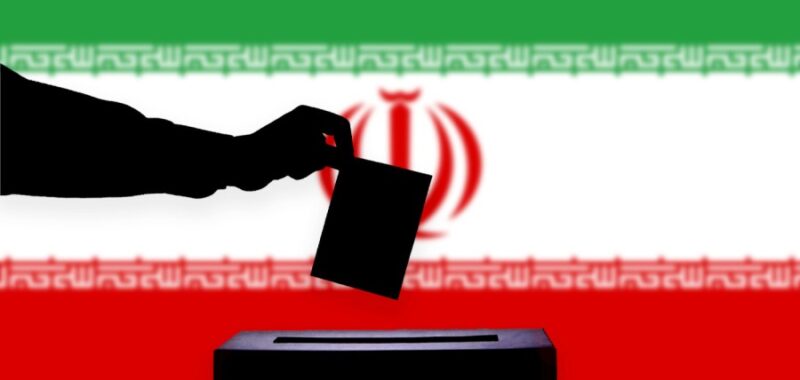
As Iran prepares for the charade of presidential elections later this month, old and new regime apparatchiks have announced their candidacies. They include former President Mahmoud Ahmadinejad, Islamic Revolutionary Guard Corps General Ali Reza Afshar and Zohreh Elahian, the first woman to run for president of Iran, as well as more than 70 others. Earlier this month, a short list of six candidates was approved by authorities to run.
But before the final six were announced, former member of Parliament Jalal Jalalizadeh was blocked from running. According to Jalalizadeh, the problem is he is the only Sunni candidate, fighting for equal rights in a majority Shiite nation, where Sunnis comrise an estimated 10 to 15 million out of a population of 90 million.
The Sunni-Shia divide goes back some 14 centuries. Although both sects agree on most tenets of Islam, the disagreement stems from who should succeed the Prophet Muhammad as leader of the Islamic faith. While a vast majority of the world’s Muslim community is Sunni, Shias make up a majority in Iran, Azerbaijan, Iraq and Bahrain.
Many hardline regime theologues view Sunnis as “followers of Yazid,” the second Umayyad caliph who fought against Imam Hussain, the grandson of the prophet Mohammed and one of the key figures in Shia Islam. Additionally, the Iranian judiciary uses the accusation of “belonging to Salafist groups” — a form of fundamentalist Sunni Islam — to keep Sunnis in line. Such a charge enables the regime to impose death sentences on Sunni activists.
“For 46 years, more than 15 million Iranians have faced discrimination and have been denied the right to run for office,” said Jalalizadeh.
This isn’t the first time Jalalizadeh has faced discrimination, even as he represented the Islamic Republic in the Majlis, Iran’s Parliament. According to Jalalizadeh, when he was nominated to be a member of the influential President’s Committee, religious leader Ayatollah Khorasani threatened, “If Jalalizadeh, a Sunni, sits above a Shia, I will issue a fatwa to delegitimize the Majlis and walk barefoot in protest.”
Discrimination against Sunnis extends much further than Jalalizadeh. Although the Iranian constitution technically respects the right of Sunnis to freely practice their religion, they are treated as second-class citizens. The Iranian regime does not see Sunni Islam as an alternative religion, but rather a security threat, which could be manipulated by such regional Sunni rivals as Saudi Arabia or Turkey.
That is why Iran is constantly cracking down on Sunnis, whether by arresting their activists and leaders, destroying mosques or preventing them from holding senior positions in business or the government. In Shia-dominated cities like Tehran, where an estimated 1 million Sunni live, Sunnis are not allowed to build mosques and are forced to use prayer halls that can be shut down on the whim of the authorities.
Provinces with large Sunni populations are much more impoverished and neglected. The Iranian Parliament itself reported that the nation’s second largest province, with nearly 3 million people, the Sunni Sistan-Baluchistan province in southeast Iran, is the most deprived region “by a significant margin,” with “limited access to basic necessities like healthcare, education, roads, energy, clean water, and sanitation.”
These provinces are also brutally policed. In September 2022, during the protests over the death of Sunni Kurd Mahsa Jina Amini in police custody after being arrested for non-compliance with mandatory hijab rules, police opened fire on protesting Baluch Sunnis, killing 96 in what would later be called “Bloody Friday.”
And brutal policing doesn’t apply only to the Baluch. According to the United Nations, although Sunni Kurds make up less than 10 percent of Iran’s population, they account for half of all political prisoners and 70 percent of judicial executions.
Apparently, most Iranian Shias don’t share the same bigoted views as the regime. Over 82 percent believe they can participate in Sunni religious ceremonies and almost 70 percent believe that intermarriage between Sunni and Shia is acceptable.
It is no wonder that Sunnis are much more disillusioned than Shia. They are more neglected, oppressed and killed by a regime that’s heavily unpopular even among Persian Shias. The regime’s disdain for them is so blatant that even loyal Sunnis aren’t allowed to participate in the farce of Iranian elections. According to a top Sunni cleric, since the 1979 Islamic Revolution, no Sunni has ever been made a minister. Today, Iran doesn’t have any Sunni governors or even ambassadors.
Jalalizadeh not being allowed to run for show elections exposes the cynicism behind the regime’s purported policy of religious tolerance. In Iran, minorities, whether religious or ethnic, are second-class citizens and nothing more.
Hussain Ehsani, a researcher focused on the Middle East, previously served as a senior researcher at the Afghan Institute for Strategic Studies. He holds a master’s degree from the University of Tehran. Joseph Epstein is director of legislative affairs for the Endowment for Middle East Truth.

